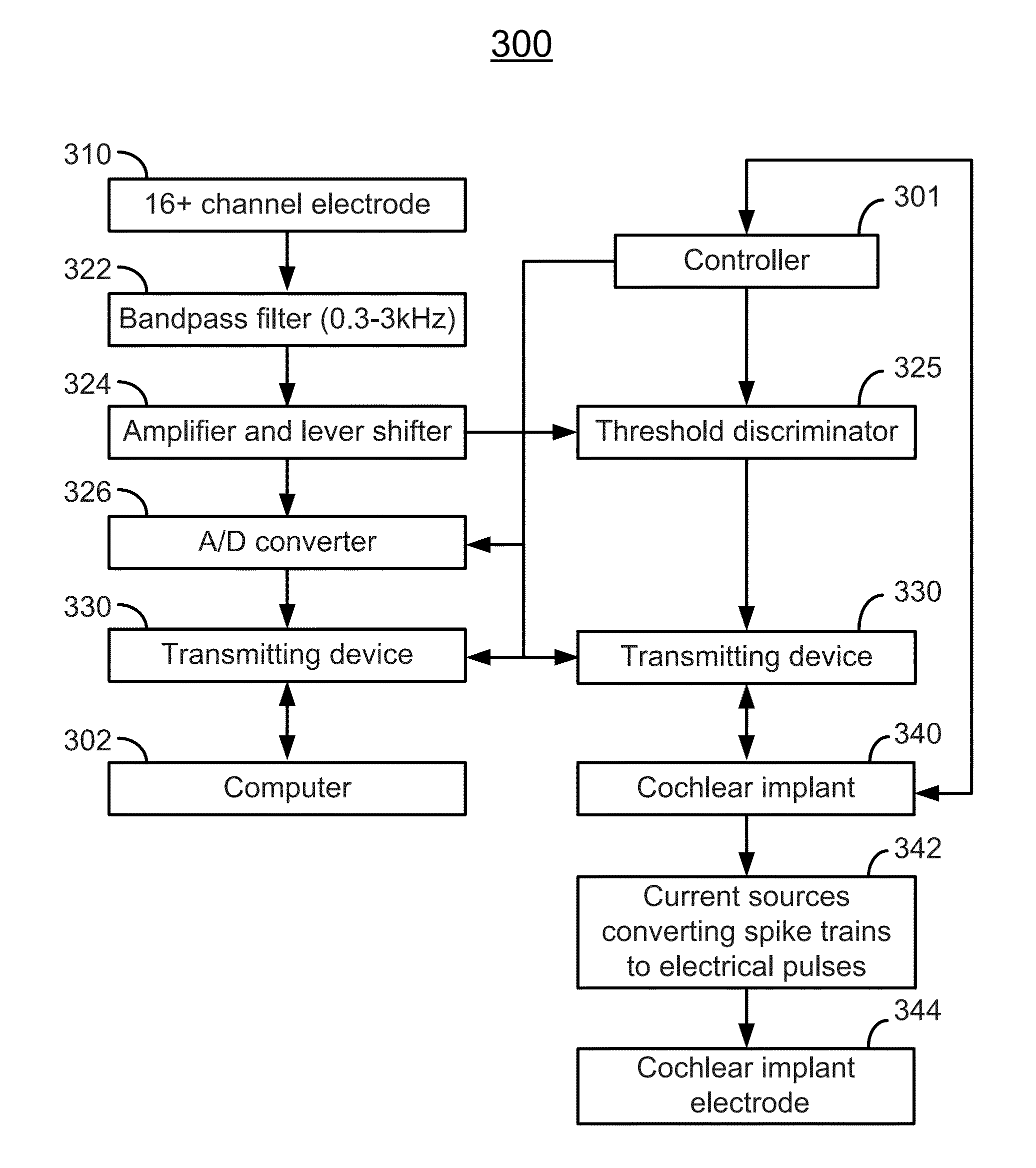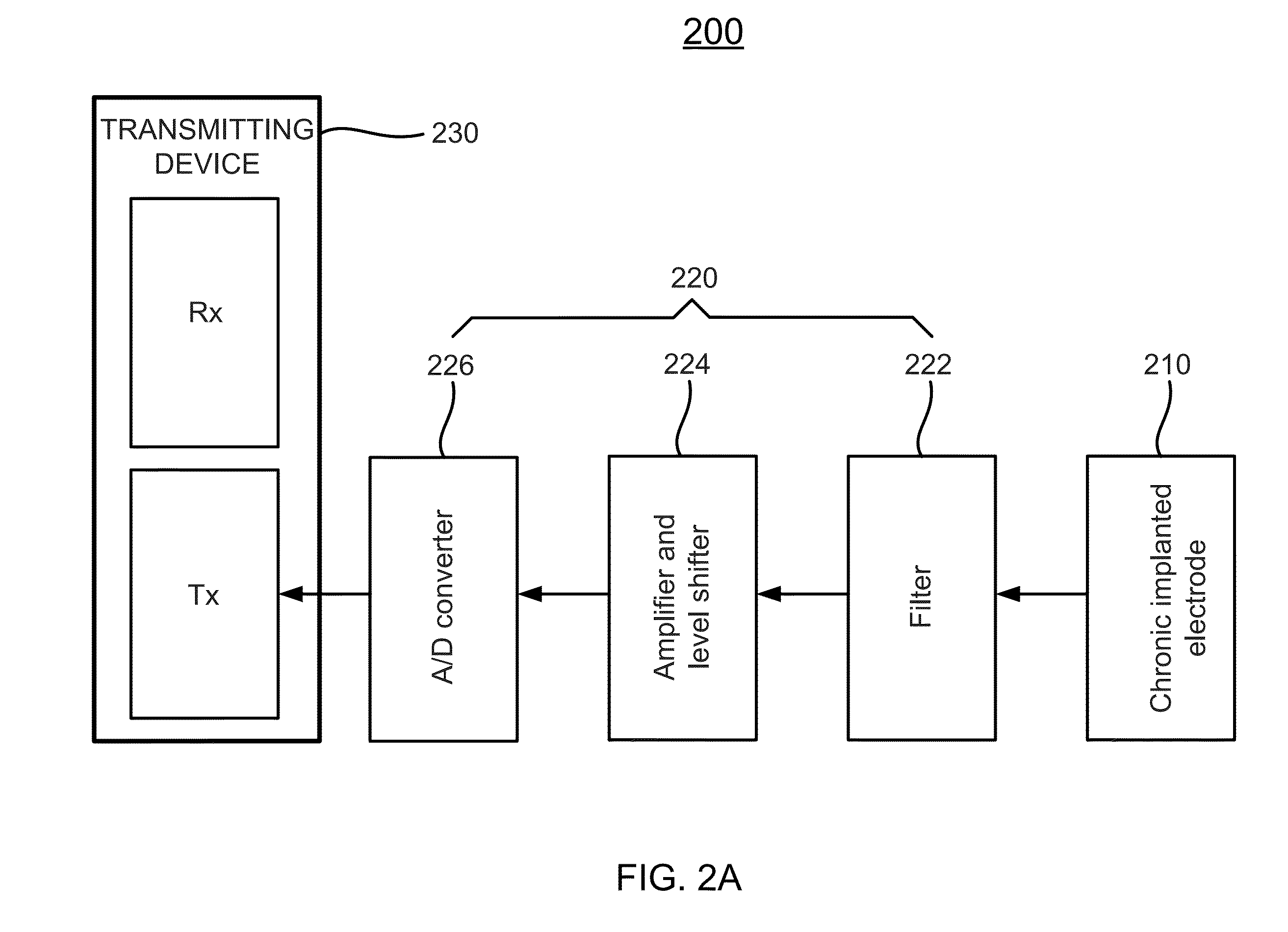System and method for animal-human neural interface
a neural interface and human brain technology, applied in the field of neural stimulation, can solve the problems of noise-free listening environment, and inability to achieve the effect of acoustic stimulation, and achieve the effect of reducing the frequency of the acoustic stimulation, and reducing the frequency of the stimulation
- Summary
- Abstract
- Description
- Claims
- Application Information
AI Technical Summary
Benefits of technology
Problems solved by technology
Method used
Image
Examples
example 1
Placing an Electrode Array in the Midbrain of a Non-Human Mammal
[0115]A silicon-substrate, thin-film multichannel penetrating electrode array (A1×16-5 mm-100-177, NeuroNexus Technologies, Ann Arbor, Mich.) is stereotactically placed in the ICC. Each array has 16 recording sites (about 177 μm2 / site) along a single shank at center-to-center intervals of 100 μm. To access the ICC, the right temporalis muscle is reflected, and an approximate 5×5 mm opening is made in the right parietal bone just dorsal to the parietal / temporal suture and just rostral to the tentorium. A small incision in the dura mater is made and the multichannel electrode array is advanced through the occipital cortex into the ICC using a 3D-micromanipulator (Stoelting, Kiel, Wis.). The latter is attached to the stereotactic head holder.
[0116]The electrode array is inserted into the ICC on a dorsolateral to ventromedial trajectory at approximately 45 off the parasagittal plane in the coronal plane. Using this trajecto...
example 2
Data Acquisition from the Electrode Implanted in a Non-Human Mammal
[0118]Compound action potentials are recorded. The round window electrode is connected to a differential amplifier (ISO-80, WPI, Sarasota, Fla.) with a high input-impedance (greater than 1012Ω) and a gain of about 60 dB. The responses are bandpass filtered (0.33 kHz) using the differential amplifier.
example 3
Transmitter Associated with a Non-Human Mammal
[0119]The device described by Sharma et al. [14] has been rebuilt, removing the component responsible for electrical stimulation. It is a multifunctional programmable controller with unidirectional data telemetry, implemented using existing commercial microchips and a standard Bluetooth protocol, which adds convenience, reliability, and ease-of-use to neuroprosthetic devices. A controller, weighing about 190 g, is placed on the animal's back and provides a sustained telemetry rate of about 500 kb / s. In certain embodiments, the transmitter can be redesigned to be fully implantable.
[0120]As described by Sharma et al. [14], in the continuously-active state, the controller consumes about 420 mW and operates without recharge for about 8 hrs. It features independent 16-channel data acquisition. It is possible to record evoked neuronal responses. Flexibility, scalability, cost-efficiency, and user-friendly computer written codes in MATLAB allow...
PUM
 Login to View More
Login to View More Abstract
Description
Claims
Application Information
 Login to View More
Login to View More - R&D
- Intellectual Property
- Life Sciences
- Materials
- Tech Scout
- Unparalleled Data Quality
- Higher Quality Content
- 60% Fewer Hallucinations
Browse by: Latest US Patents, China's latest patents, Technical Efficacy Thesaurus, Application Domain, Technology Topic, Popular Technical Reports.
© 2025 PatSnap. All rights reserved.Legal|Privacy policy|Modern Slavery Act Transparency Statement|Sitemap|About US| Contact US: help@patsnap.com



